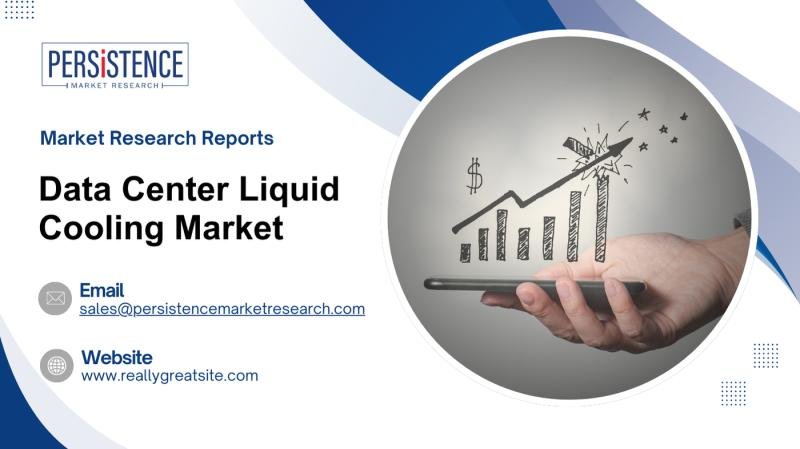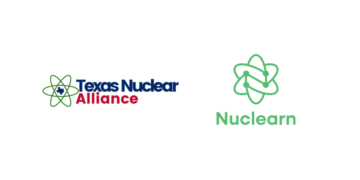The data center liquid cooling market is projected to grow from US$ 4.1 billion in 2024 to US$ 19.4 billion by 2031, registering a CAGR of 24.6%. Increasing data center density and stringent energy efficiency regulations are driving adoption, with liquid cooling proving up to 40% more efficient than air cooling. Hyperscale and edge data centers are embracing this technology to manage high thermal loads from AI, HPC, and cloud computing. North America leads growth, expected to expand at 11.5% CAGR through 2031, supported by cloud giants like AWS, Google, and Microsoft. Cold plate cooling dominates with a 44.4% share, offering precise thermal management, while large data centers (10,000+ sq. ft.) command a 59.3% market share due to growing server density. Cloud providers are adopting sustainable solutions, pushing liquid cooling CAGR to 28.1% in this segment. The rise of modular and immersion cooling, along with industry standardization efforts, is shaping the market’s future.
Get a Sample Report: https://www.persistencemarketresearch.com/samples/13330
Rising Demand for High-Performance Computing Fuels Liquid Cooling Adoption
Data centers are at the heart of the digital economy, supporting cloud computing, AI, big data analytics, and machine learning applications. High-performance computing (HPC) workloads generate substantial heat, making efficient cooling a necessity. Liquid cooling solutions are emerging as the preferred choice due to their superior thermal management capabilities. Compared to traditional air-cooling methods, liquid cooling offers better energy efficiency, reduced operational costs, and improved performance for high-density computing environments.
Edge Computing and AI Boom Accelerate Market Growth
The rapid expansion of edge computing and AI-driven workloads is another key driver of the liquid cooling market. Edge data centers, which process data closer to the source, require efficient cooling in compact environments where traditional cooling systems may not be viable. AI workloads, particularly those involving deep learning and neural networks, demand high-power computing, generating significant heat. Liquid cooling solutions enable optimal thermal performance, ensuring reliability and efficiency in these advanced computing applications.
Rising Power Densities Necessitate Advanced Cooling Technologies
Modern data centers are evolving to accommodate increasing power densities, pushing the limits of conventional cooling methods. Server racks with power densities exceeding 20 kW per rack require advanced thermal management strategies. Liquid cooling systems, including direct-to-chip cooling and immersion cooling, provide effective solutions by efficiently dissipating heat from high-power components. This trend is driving significant investments in liquid cooling infrastructure across hyperscale and enterprise data centers.
Sustainability and Energy Efficiency: A Major Market Driver
The growing emphasis on sustainability and energy efficiency is propelling the adoption of liquid cooling technologies. Data centers account for a substantial portion of global energy consumption, with cooling systems contributing significantly to overall power usage. Liquid cooling reduces energy consumption by eliminating the need for excessive air conditioning, resulting in lower carbon footprints. Companies are increasingly prioritizing green data center initiatives, further boosting the demand for liquid cooling solutions.
Immersion Cooling and Direct-to-Chip Cooling Gain Traction
Among the various liquid cooling techniques, immersion cooling and direct-to-chip cooling are gaining widespread acceptance. Immersion cooling involves submerging IT components in a non-conductive liquid, ensuring uniform heat dissipation and eliminating the need for traditional fans. This method is highly efficient and ideal for high-density computing environments. Direct-to-chip cooling, on the other hand, utilizes liquid-cooled cold plates attached to processors and GPUs, offering targeted cooling for high-performance computing workloads. These innovative technologies are shaping the future of data center thermal management.
Hyperscale Data Centers Drive Market Expansion
The rise of hyperscale data centers, operated by tech giants like Amazon, Google, and Microsoft, is a significant growth catalyst for the liquid cooling market. Hyperscalers are investing heavily in advanced cooling solutions to optimize performance and reduce operational costs. With the demand for cloud services, AI, and edge computing surging, hyperscale data centers are increasingly adopting liquid cooling technologies to meet efficiency and sustainability goals.
North America Leads, While Asia-Pacific Emerges as a Key Growth Region
North America currently dominates the data center liquid cooling market, driven by the presence of major data center operators and technology providers. The region’s stringent energy regulations and focus on sustainability are further accelerating the adoption of liquid cooling solutions. Meanwhile, Asia-Pacific is emerging as a high-growth market, fueled by rapid digital transformation, increasing cloud adoption, and government initiatives to develop energy-efficient data centers. Countries like China, India, and Japan are witnessing a surge in data center investments, creating significant opportunities for liquid cooling providers.
Challenges and Considerations in Liquid Cooling Adoption
Despite its numerous benefits, the adoption of liquid cooling presents certain challenges. High initial investment costs, compatibility concerns with existing infrastructure, and the need for specialized maintenance are some of the factors limiting widespread adoption. Additionally, data center operators must carefully evaluate the potential risks associated with liquid-based systems, including leak prevention and fluid management. However, ongoing technological advancements and cost reductions are expected to mitigate these challenges, making liquid cooling more accessible in the coming years.
Future Outlook: The Path to Widespread Adoption
The future of data center cooling is poised for a paradigm shift, with liquid cooling set to become the standard for next-generation facilities. Innovations in coolant technologies, modular cooling solutions, and AI-driven cooling optimization will further enhance efficiency and reliability. As sustainability concerns continue to drive industry trends, liquid cooling will play a pivotal role in shaping the future of data center infrastructure.
Conclusion
The data center liquid cooling market is experiencing rapid growth, fueled by the increasing demand for high-performance computing, AI-driven workloads, and energy-efficient cooling solutions. With a projected market value of $19.4 billion by 2031 and a CAGR of 24.6%, liquid cooling is set to revolutionize the data center industry. As enterprises and hyperscalers prioritize sustainability and operational efficiency, liquid cooling technologies will become indispensable in the evolving data center landscape.
Read More Trending “PMR Exclusive Article”:
https://www.linkedin.com/pulse/europe-activated-alumina-market-grow-73-19ouc
https://www.linkedin.com/pulse/south-india-emerges-key-hub-construction-56hrc
https://www.linkedin.com/pulse/north-america-dominates-medical-specialty-bags-7giuc
https://www.linkedin.com/pulse/us-motor-vehicle-sensors-market-reach-63-billion-adh5c
https://www.linkedin.com/pulse/europe-leads-playground-surfaces-30-market-gcgic
Contact Us:
Persistence Market Research
G04 Golden Mile House, Clayponds Lane
Brentford, London, TW8 0GU UK
USA Phone: +1 646-878-6329
UK Phone: +44 203-837-5656
Email: sales@persistencemarketresearch.com
Web: https://www.persistencemarketresearch.com
About Persistence Market Research:
At Persistence Market Research, we specialize in creating research studies that serve as strategic tools for driving business growth. Established as a proprietary firm in 2012, we have evolved into a registered company in England and Wales in 2023 under the name Persistence Research & Consultancy Services Ltd. With a solid foundation, we have completed over 3600 custom and syndicate market research projects, and delivered more than 2700 projects for other leading market research companies’ clients.
Our approach combines traditional market research methods with modern tools to offer comprehensive research solutions. With a decade of experience, we pride ourselves on deriving actionable insights from data to help businesses stay ahead of the competition. Our client base spans multinational corporations, leading consulting firms, investment funds, and government departments. A significant portion of our sales comes from repeat clients, a testament to the value and trust we’ve built over the years.
This release was published on openPR.



















